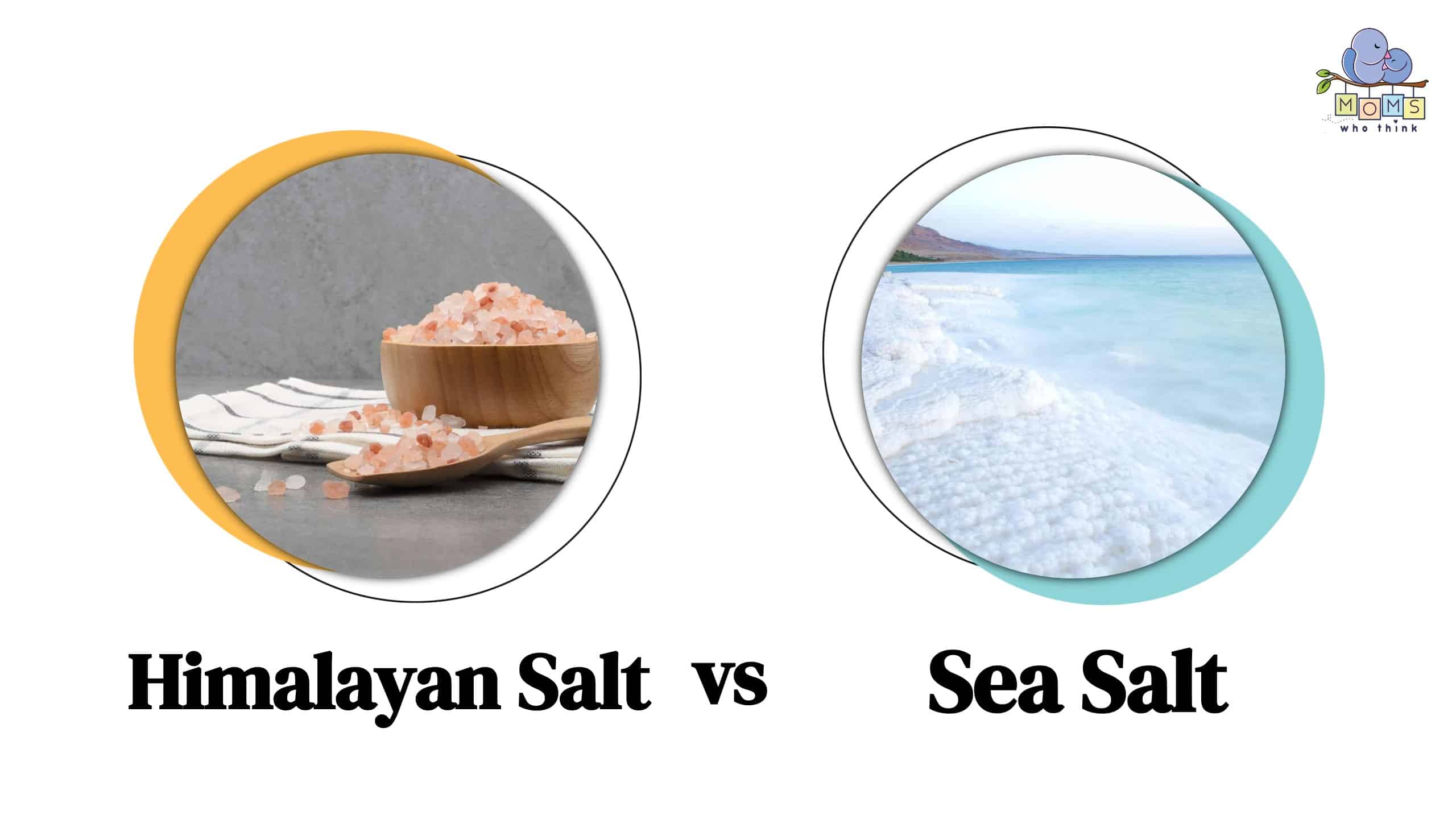Salt is very important to the function of our bodies. However, it is possible to eat too much or too little salt. That is why many conflicting studies exist about this vital mineral. So, what is the truth? What exactly is salt? Which salt should we choose, and are there more health benefits from one to the other? This article focuses on the difference between Himalayan salt and sea salt. However, first, let's talk a little bit about the benefits of salt in general.
Benefits of Salt
Salt is sodium chloride. Sodium is very important to our diet, and salt is in many different foods. First, salt helps balance fluids. Salt is also helpful for muscle function and digestive function.
Salt is also a great food preserver used for years in food processing. It is possible to eat too much salt or too little salt. Too much sodium may lead to difficulties with heart health or even have a connection to stomach cancer.
However, it is common knowledge that salt is important to our health and necessary. Now, let's get to the difference between Himalayan and sea salt.
Himalayan Salt vs. Sea Salt: What are the Differences?
When it comes to the differences between Himalayan salt and sea salt, there are plenty. The very first difference is in the extraction process. Himalayan salt is in the Himalayan mountains. The mining is by hand. On the flip side, the process of extracting sea salt means evaporating the water until you have just the salt.
- The must-have convenient reference guide for every home cook!
- Includes more than 8,000 substitutions for ingredients, cookware, and techniques.
- Save time and money on by avoiding trips to grab that "missing" ingredient you don't really need.
Another one of the differences is the color. Himalayan salt is an intriguing pink and sometimes orange, while sea salt is white. The pink and orange hue comes from mineral impurities; Himalayan salt has trace amounts of iron oxide.
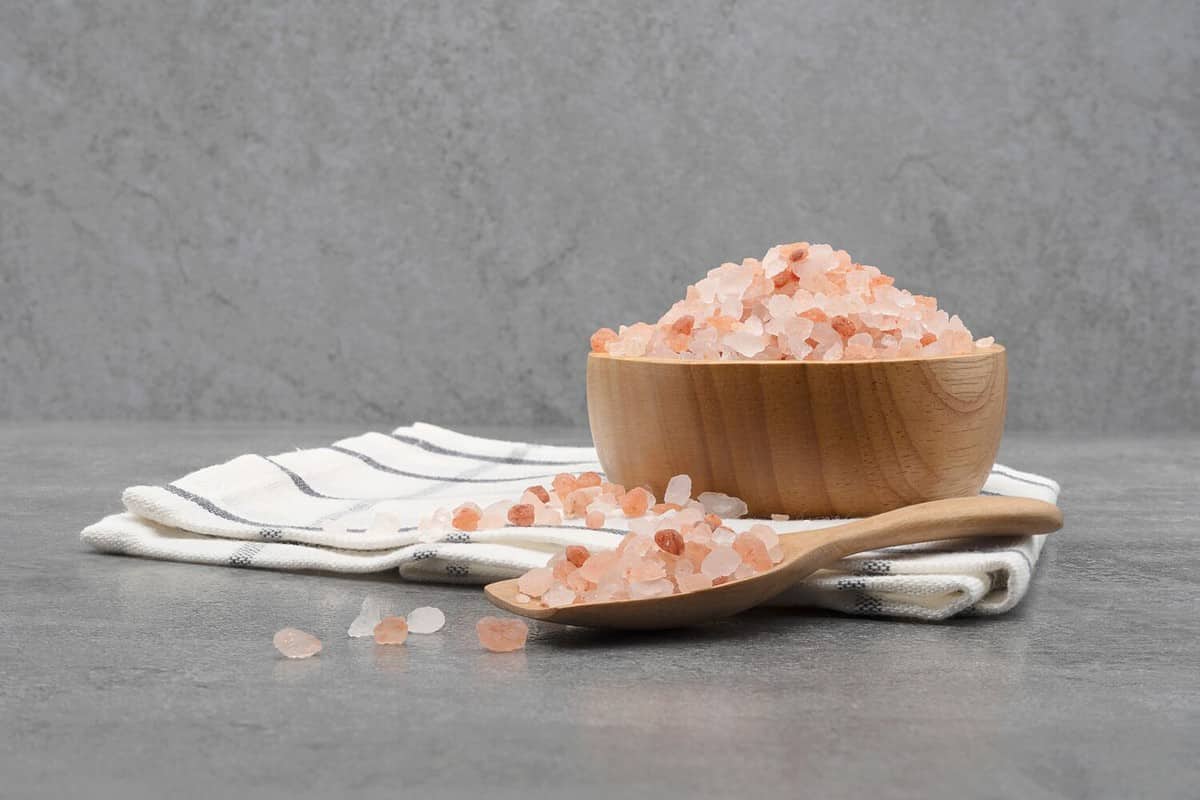
©Surasak Klinmontha/Shutterstock.com
Texture and Taste
Another one of the differences between Himalayan salt and sea salt lies in the texture and taste. Himalayan salt taste is more potent than sea salt. When extracted, it is in huge chunks. The chunks are ground and cut. However, the sizes are different and larger than typical sea salt or table salt. Himalayan salt is in its purest state, processing only enough to make it safe to eat.
Sea salt, however, is smaller and coarser. The size is finer than Himalayan salt; however not as small as table salt.
The taste of Himalayan salt is sweeter and more delicate than salt. The flavor of sea salt is less salty than table salt, but it still has an intenser taste than Himalayan salt.
Himalayan Salt vs. Sea Salt Nutritional Value
Regarding nutritional value, Himalayan salt undergoes less processing than sea salt. The mineral content of Himalayan salt stays in its purest form, with natural iodine. Sea salt undergoes more purification. Therefore, minerals are lost in the process. The iodine in sea salt is artificially added.
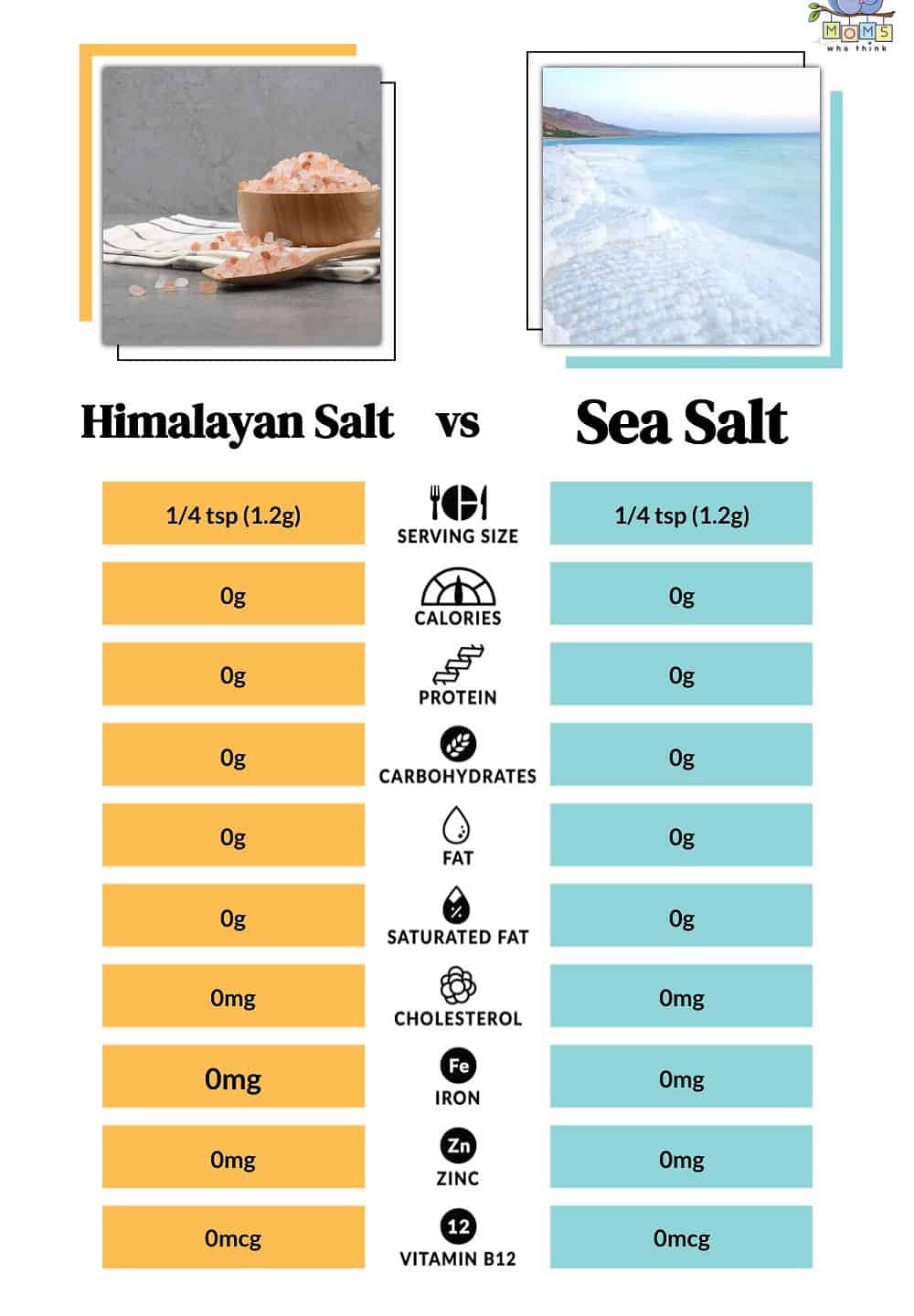
©
What is Himalayan Salt?
When it comes to Himalayan Salt, the pink hue makes it noticeable and quite intriguing.
Himalayan salt also contains potassium, magnesium, iron, calcium, and sodium.
However, what exactly is Himalayan salt? Does it have any health benefits? Where does it come from? These questions are all important to ask yourself before using this mineral.
First, Himalayan salt comes from the Mountains in South Asia. The mining of this type of salt takes place in Pakistan. The name comes from the mountains it is mined from, the Himalayan mountains.
It has recently become very popular in households, upping mining and exporting efforts.
Due to its increasing popularity, you will be met with various health claims when you search Himalayan sea salt. What are they, and do they have any weight? Here are some of the health benefit claims:
- Detoxifying the body
- Increasing libido
- Purify the air
- Balance pH in your body
- Regulate your blood sugar
- Slow aging
These are just a few health claims, but are they true? It is important to see that these claims are based on the minerals that Himalayan salt contains. However, the minerals are simply trace amounts.
Therefore, the backing and research that supports these claims are not there. Some of these benefits are quite possible. However, when you dig deeper, it appears that the claims of these benefits contribute to sodium chloride's effects on your body in general.
Since sodium chloride is in all salts, it makes sense that any salt will offer these benefits.
What Is Sea Salt?
Sea salt is salt that is when you evaporate salt water. The process of doing this is minimal. It mostly has sodium chloride.
There are other minerals in sea salt. These include iron, calcium, and potassium.
Sea salt can be added to food; however, many people add it to other outlets. These include baths, drinks, and scrubs.
- The must-have convenient reference guide for every home cook!
- Includes more than 8,000 substitutions for ingredients, cookware, and techniques.
- Save time and money on by avoiding trips to grab that "missing" ingredient you don't really need.
Much like Himalayan salt, sea salt has many health claims behind its name. Similarly, sea salt has little research to support these claims. Many of the health benefits of sea salt, such as improving your skin conditions and balancing hydration and digestion, go back to simply using salt in general.
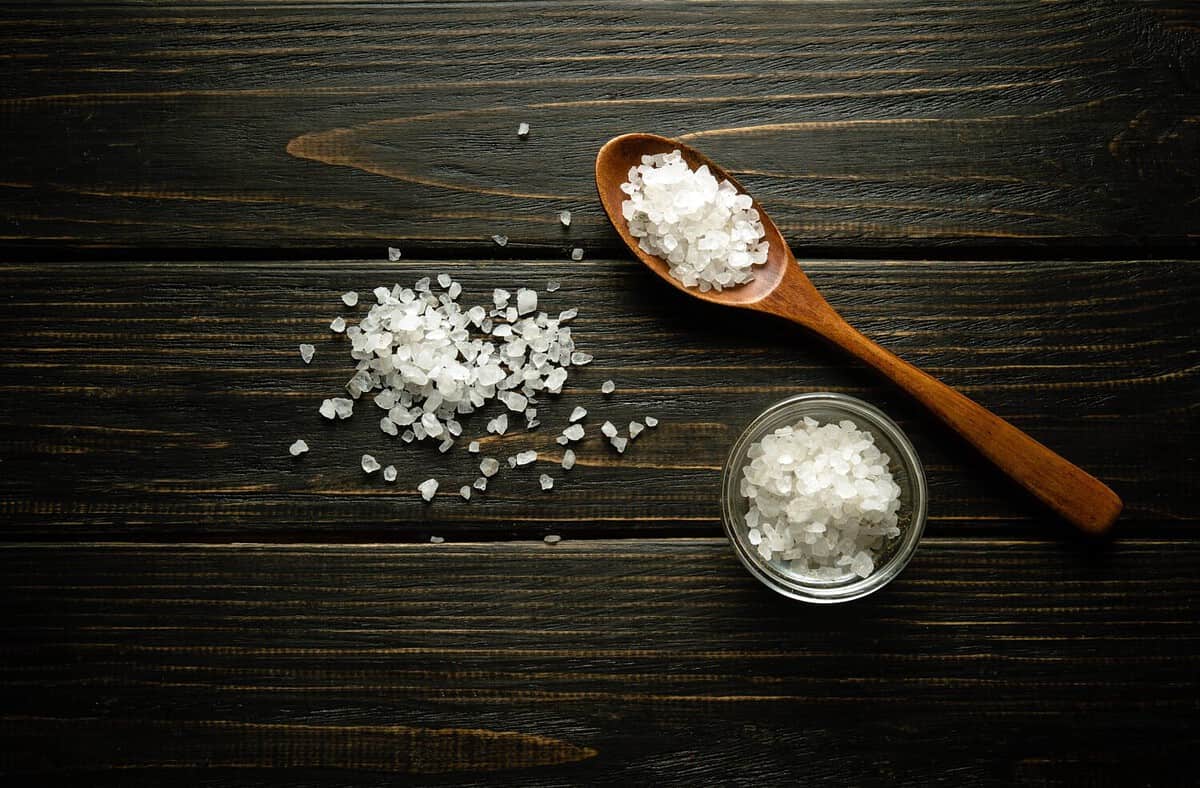
©VITALII BORKOVSKYI/Shutterstock.com
Can You Substitute Himalayan Salt for Sea Salt?
Yes, it is possible to substitute Himalayan salt for sea salt. However, there may be some differences to consider.
The first one is the color. Himalayan salt has a pink hue. Secondly, Himalayan salt is also larger. They are crystals and are a bit saltier than sea salt.
Sea salt has a finer texture than Himalayan salt. If you do substitute, be mindful of the texture changes.
Uses for Sea Salt and Himalayan Salt
You can use salt in a variety of ways. Many people use salt to add taste and texture to their meals. You can add salt to virtually almost any food. Salt is also a food preserver to extend its shelf life.
However, cooking is not the only use for salt. Salt is in beauty products like body scrubs and to create bath salts. It is also used to make soap, melt ice in winter, and even baking soda.
There are also natural uses for salt, like easing a bee sting, stopping a grease fire, or even killing poison ivy. With all of these many benefits, it is clear to see we need salt in our everyday life, for the daily function of our body, and for various uses.
One Last Note
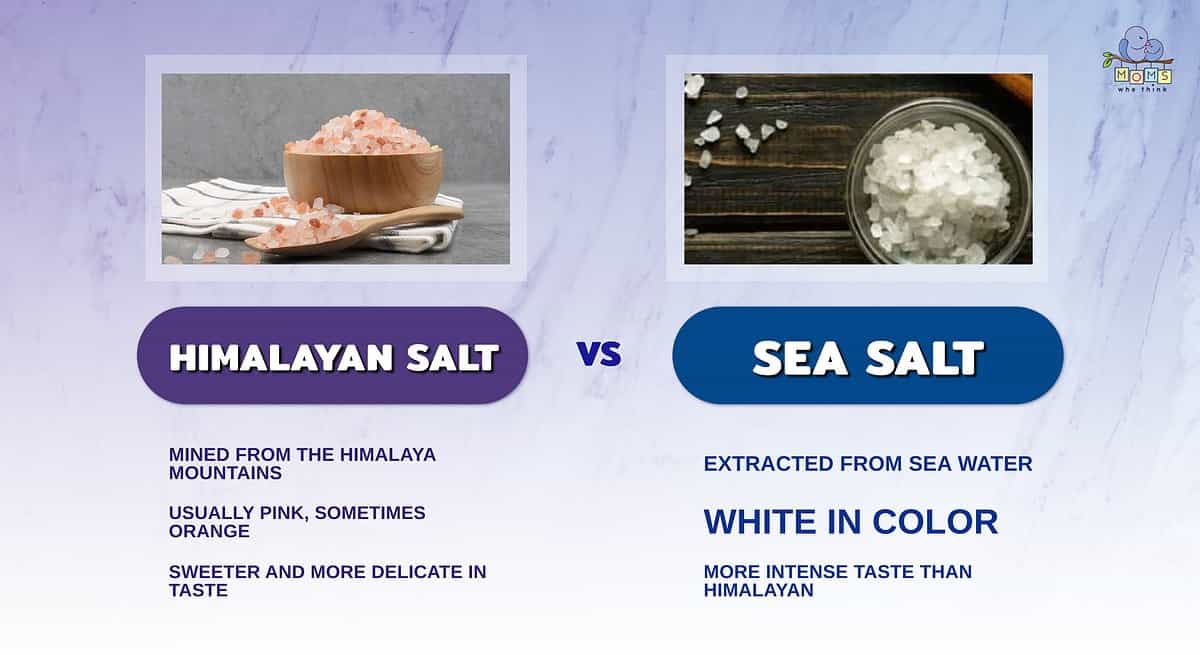
- The way that these salts are acquired differs. Himalayan salt comes from Himalayan salt mines, while sea salt is extracted from seawater.
- Himalayan salt is usually pink in color, but can be orange. This is due to trace amounts of iron oxide. Meanwhile, sea salt is white.
- Sea salt has a more intense flavor than Himalayan salt; the latter has a sweeter and more delicate taste.
Salt has many different uses. It can extinguish a grease fire, ease a bee sting, and make scrubs and soap. There are a variety of different salts to choose from.
Himalayan and sea salt both have health claims that have little research done to back them up. However, many of these benefits can be traced back to the benefits of salt in general.
Himalayan salt has a pink or orange hue that captivates the eye. It is larger than sea salt. The texture is not as coarse as sea salt, and the minerals remain intact. Himalayan salt is mined from the hills of the Himalayan mountains in Pakistan.
On the other hand, sea salt is what you get when you evaporate the water from salt water. It has a coarse and more bitter taste than Himalayan salt. Sea salt is bigger than table salt; however, smaller than Himalayan salt. It does undergo some processing, making it lose nutrients in the process.
The decision is ultimately a personal preference regarding which one to use for cooking and more. Both salts can be great for cooking because the natural minerals remain. However, when it comes to which one is better, the truth is there is very little to no research done to say which one has more health benefits.
Try using sea salt in this recipe:
PrintMustard Seasoned Chicken Strips with Sea Salt
- Yield: 4 servings 1x
Ingredients
1/3 cup egg substitute
1 Tablespoon prepared mustard
1 garlic clove, minced
3/4 cup dry bread crumbs
2 teaspoons dried basil
1 teaspoon paprika
1/2 teaspoon salt
1/4 teaspoon pepper
1 pound chicken tenderloins
Instructions
1. In a shallow bowl, combine the egg substitute, mustard, and garlic.
2. In another shallow bowl, combine the bread crumbs, basil, paprika, salt, and pepper.
3. Dip chicken in egg mixture, then roll in crumbs.
4. Place on a baking sheet coated with cooking spray. Bake at 400° for 10 15 minutes or until golden brown and juices run clear.
Nutrition
- Serving Size: 3 ounces cooked chicken
- Calories: 188
- Sodium: 525mg
- Fat: 2g
- Carbohydrates: 14g
- Fiber: 1g
- Protein: 30g
- Cholesterol: 67mg
Comparison Posts
- Chickpea Pasta vs. Regular Pasta: Which One is the Healthier Dinner Option?
- Chili Flakes vs Red Pepper Flakes: Key Differences and Recipes with Each One
- Magnesium Flakes vs. Epsom Salts: Facts You Need to Know
- Baking in Glass vs Metal: Which One Should You Use?
